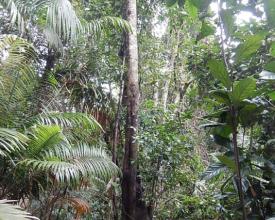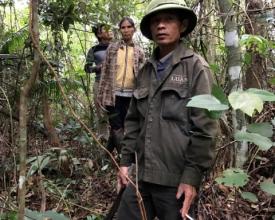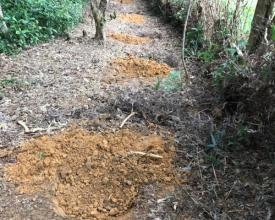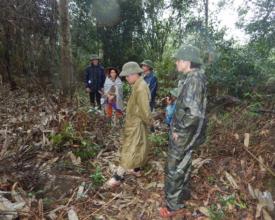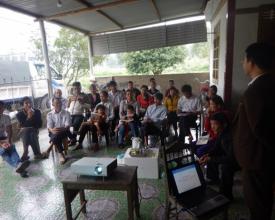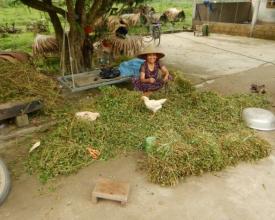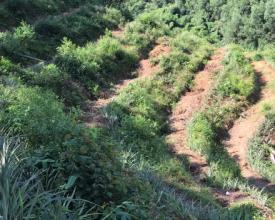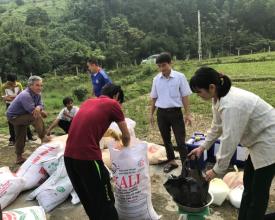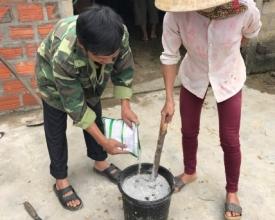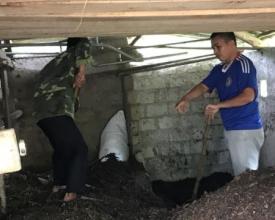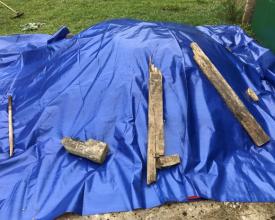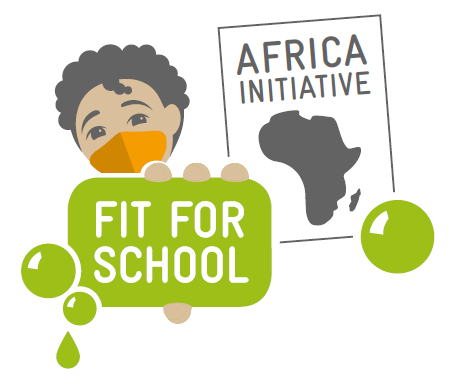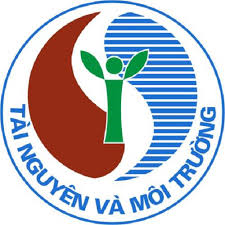
Protection et restauration des forêts pour atténuer les sécheresses extrêmes dans la province de Ha Tinh, au Vietnam
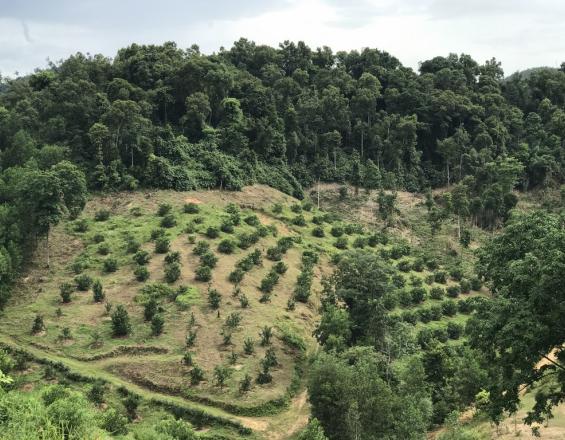
Les autorités de la commune de Son Tho et les villageois sont confrontés à plusieurs risques liés au changement climatique, notamment des périodes de froid et de sécheresse, ainsi que quelques précipitations. Les sécheresses sévères et accrues ont de nombreux effets néfastes sur les populations et les écosystèmes. La protection et l'enrichissement des forêts sont des tampons efficaces contre la sécheresse et la mesure EbA la plus prometteuse sur la base de consultations et d'une évaluation de la vulnérabilité. Cette solution comprend des activités dans les parties supérieures, moyennes et inférieures des écosystèmes terrestres vallonnés. Cette solution est étroitement liée à la solution EbA "Strategic mainstreaming of Ecosystem-based Adaptation (EbA) into planning frameworks in Ha Tinh and Quang Binh Province" et s'appuie sur son évaluation de la vulnérabilité comme réponse technique, couvrant l'implication de la communauté, les formations techniques et la mise en œuvre sur le terrain.
Contexte
Défis à relever
Les forêts naturelles de la région sont de plus en plus converties en plantations à courte rotation, principalement en Acacia hybride (ci-après acacia) pour la production de copeaux de bois. Cette conversion entraîne la dégradation des écosystèmes par le ruissellement et l'érosion, la réduction des services tels que les ressources en eau et les produits forestiers non ligneux. La variabilité des conditions météorologiques exacerbe cette réduction, ce qui diminue la capacité d'adaptation des habitants et des écosystèmes.
En particulier, les sécheresses sévères et accrues ont de nombreux effets néfastes sur les populations et les écosystèmes : i) Les riziculteurs n'ont pas pu cultiver la deuxième récolte de riz dans la partie inférieure de la zone en raison du manque d'eau ; ii) Les arbres fruitiers et les cultures annuelles dans la partie centrale de la zone (oranges, arachides, maïs, haricots verts, manioc, etc.) n'ont pas bien poussé et beaucoup sont morts ; iii) Manque d'eau pour l'usage humain (les gens utilisent souvent l'eau souterraine des puits et l'eau de surface des ruisseaux dans la forêt directement) ; iv) Beaucoup de terres sont laissées en jachère pendant les sécheresses.
Emplacement
Traiter
Résumé du processus
La solution se compose de différents blocs reliés entre eux. La plantation de bois indigène (BB1) au sommet de la montagne fournit de l'eau souterraine qui apporte de l'humidité à la partie inférieure, fournit de l'eau aux humains et aux rizières, et protège toutes les parties inférieures des vents violents. La plantation d'ananas et de cacahuètes (BB2) entre les champs d'oranges situés près du sommet retient l'humidité, contrôle le ruissellement et l'érosion et améliore les sols. La fabrication de compost à partir de résidus agricoles (BB3) fournit un engrais organique pour les orangers et les cultures.
Blocs de construction
Restauration des forêts naturelles dégradées avec des arbres indigènes dans la partie supérieure des collines
La plantation a commencé en décembre 2016 pour :
i) protéger et enrichir les forêts naturelles existantes de très faible densité et de composition médiocre,
ii) présenter les avantages comparatifs des forêts naturelles par rapport aux plantations d'acacias,
iii) sensibiliser les résidents locaux à l'utilisation des écosystèmes.
Les forêts ont été protégées et enrichies pour fournir différents services aux autres écosystèmes et à l'homme, tels que la nourriture et les produits forestiers non ligneux pour l'usage quotidien et les revenus, la régulation du microclimat, l'eau souterraine et les conditions météorologiques extrêmes.
54 ménages dont les forêts sont reliées entre elles ont participé aux activités. Ils ont ensuite été formés à l'enrichissement, y compris par des exercices pratiques dans leurs forêts. Les forêts ont été enrichies par des bandes et des points, en fonction de l'état actuel de la forêt qui a été vérifié par les techniciens. Trois espèces indigènes ont été plantées : Erythrophloeum fordii (bois de fer), Cinnamomum iner (cannelier d'Asie du Sud-Est) et Manglietia glauca (magnolia). Ces espèces ont été plantées en rangées simples le long des courbes de niveau. Le taux de survie était de 95 % et tous les arbres avaient de nouveaux points de croissance après deux mois. Les plantations sont entretenues et contrôlées par les agriculteurs.
Facteurs favorables
- Différents aspects ont rendu cette plantation possible. Les agriculteurs ont compris l'importance de préserver les forêts naturelles pour leur propre vie. Cela les a amenés à s'engager et à travailler dur dans leurs forêts.
- En outre, la plantation est conforme aux plans de développement du district et de la commune concernant l'enrichissement des forêts naturelles par des espèces indigènes.
- Enfin, leur travail a été étroitement surveillé et soutenu par des techniciens pour s'assurer que la plantation était effectuée correctement et pour les motiver pour leur dur labeur.
Leçon apprise
- Un grand nombre d'agriculteurs souhaitent défricher leurs forêts pour y planter des espèces à croissance rapide pour des rotations courtes.
- En outre, les gouvernements attirent les investissements dans l'industrie, notamment dans les usines de construction et de transformation qui ont besoin de matières premières provenant d'espèces à croissance rapide. Ces tendances soutiennent les agriculteurs qui décident facilement de convertir les forêts naturelles en plantations à courte rotation pour leur vie quotidienne et leurs revenus.
- Outre la sensibilisation des agriculteurs aux avantages des forêts naturelles, l'équipe du projet a travaillé en étroite collaboration avec les autorités locales pour veiller à ce que la protection et la restauration des forêts naturelles soient mises en œuvre de manière efficace.
- Un autre point important a été l'implication d'agriculteurs passionnés par les forêts naturelles et qui servent de "modèles" aux autres familles.
- Enfin, le processus a été transparent et les agriculteurs ont pu s'exprimer tout au long du processus.
Plantation en courbe d'ananas et de cacahuètes dans des champs d'orangers
Cette plantation a débuté en mars 2017 dans le but de
i) réduire le ruissellement et l'érosion dans les champs d'orangers en pente,
ii) maintenir un taux d'humidité élevé pour les orangers,
iii) protéger la couche supérieure du sol
iv) augmenter la fertilité du sol, et
v) minimiser l'enherbement qui concurrence les orangers.
Ainsi, cette plantation mixte peut fournir un certain nombre de services aux cultivateurs, tels que les fruits des orangers et des ananas pour le revenu, le fourrage pour les animaux et les matériaux des arachides pour le compost et l'amélioration des sols.
12 ménages ont participé à cette plantation. Ils ont été sélectionnés lors de réunions communautaires sur la base de critères (engagement, caractéristiques du site, main-d'œuvre). Deux membres de chaque ménage ont été invités à participer à la formation technique en classe sur la réalisation de cette plantation. Les formateurs ont présenté les techniques de plantation dans le cadre de discussions locales et des leçons tirées de l'expérience. Les agriculteurs se sont également vus proposer une partie pratique dans leurs propres champs d'orangers pour une application détaillée et réelle.
Les ananas ont été plantés en courbes de niveau entre les rangées d'orangers, par plantation en dents de scie pour assurer la fonction de contrôle de l'érosion. L'arachide Pinto - une plante fixatrice d'azote - a été plantée entre les arbres. Le taux de survie est presque de 100 %, les ananas offrant déjà les premiers fruits. Cette activité fait l'objet d'un suivi et d'un contrôle permanents de la part des agriculteurs.
Facteurs favorables
- L'un des facteurs de réussite de cette plantation a été la communication de ses valeurs aux agriculteurs. Comme l'arachide pinto était totalement nouvelle pour les agriculteurs et le personnel communal, beaucoup d'entre eux étaient réticents à l'appliquer. Les techniciens et l'équipe du projet ont mis en œuvre de bonnes pratiques pour les montrer aux habitants.
- Deuxièmement, les techniciens ont utilisé les connaissances traditionnelles dans le cadre de la formation, ce qui a aidé les agriculteurs à comprendre cette approche.
- Des contrôles fréquents ont été proposés pour soutenir les agriculteurs et les motiver pour leur dur labeur.
Leçon apprise
- La plantation d'ananas et de cacahuètes en contours dans les champs d'orangers prend plus de temps que la culture d'orangers sans rien entre les deux.
- Les agriculteurs ont dû effectuer de nombreuses tâches différentes pour que les ananas soient plantés en rangs dentelés et les arachides en plates-bandes. Par conséquent, les informations sur les exigences techniques doivent être clairement expliquées aux agriculteurs dès le début.
- La première application ne doit pas concerner un trop grand nombre de ménages.
- Cette application étant nouvelle pour les agriculteurs, des contrôles fréquents sont très importants pour s'assurer qu'ils restent intéressés et qu'ils s'engagent dans le travail.
- La troisième leçon est l'implication d'un institut local (l'unité d'agroforesterie dans ce cas) pour permettre l'introduction et la reproduction auprès d'autres agriculteurs et dans d'autres régions lorsque cela est possible.
- Les ménages participants doivent être soigneusement sélectionnés, car ceux qui ont de nombreuses possibilités de subsistance risquent de ne pas participer parce qu'ils se concentreront sur des activités génératrices de revenus, plutôt que sur cette approche qui apporte principalement une valeur environnementale plutôt qu'une augmentation des revenus.
Production de compost pour les cultures
Cette plantation a débuté en 2017 au mois d'août pour :
i) maximiser les ressources disponibles, utiliser les sous-produits agricoles, le travail agricole bénévole pour produire des engrais bio-organiques de haute valeur,
ii) renforcer les micro-organismes du sol, la décomposition rapide des matières organiques, éliminer et détruire les micro-organismes nuisibles qui existent dans le fumier, soutenir les plantes pour augmenter leur résistance,
iii) contribuer à la protection de l'environnement, en réduisant la toxicité des produits chimiques dans les produits agricoles en raison de l'utilisation abusive d'engrais chimiques,
iv) sensibiliser les villageois à la propreté de l'environnement.
Les agriculteurs tireront donc un certain nombre d'avantages du compost qu'ils fabriquent, notamment l'accès à des ressources en engrais à un prix raisonnable pour leurs conditions, une moindre dépendance à l'égard des marchés, la préservation de la propreté de l'environnement et la garantie d'une bonne qualité des produits agricoles.
18 ménages - sélectionnés lors de différentes réunions communautaires - ont participé à cette activité et ont reçu des formations techniques sur la production de compost dans le cadre d'un processus étape par étape combinant la théorie et la mise en œuvre pratique dans leurs jardins.
Facteurs favorables
Les facteurs suivants ont contribué à l'efficacité de cette activité :
- Les agriculteurs ont accordé une attention particulière à l'application des connaissances scientifiques à leurs activités de production agricole afin d'obtenir de meilleurs produits,
- les matériaux nécessaires étaient disponibles localement,
- les conditions météorologiques ont été favorables aux agriculteurs pendant la mise en œuvre, car il y a eu peu de pluie et peu d'humidité.
- Les projets ont fourni une petite quantité d'intrants tels que des probiotiques Trichoderma, de la mélasse et de la chaux.
Leçon apprise
- Le compost peut être produit dans la quantité dont les agriculteurs ont besoin pour leurs cultures et leurs arbres.
- Même si seulement 18 ménages ont participé, le matériel technique a été partagé avec d'autres agriculteurs.
- Les agriculteurs doivent comprendre comment utiliser le compost dans le processus de lutte intégrée contre les ravageurs, en particulier comment utiliser le compost pour les arbres et les cultures à certains stades de croissance (par exemple, la période de production des fruits est importante).
- Des contrôles fréquents doivent être effectués pour s'assurer que le compost est en bon état.
Impacts
Environnement :
- Les forêts sont bien entretenues et fournissent davantage de biens et de services afin d'être moins vulnérables aux événements climatiques extrêmes, notamment (services d'approvisionnement - augmentation de la nourriture organique pour l'usage quotidien de l'homme, la nourriture pour les animaux et les abeilles est stable au fil des ans, l'eau pour la deuxième période du riz paddy, l'homme et les animaux ; régulation - capacité de stockage de l'eau pour l'homme, les cultures et les animaux, régulation du microclimat ; soutien - amélioration de l'habitat pour d'autres espèces).
Social et économique :
- Les agriculteurs disposent d'un revenu stable provenant des biens et services forestiers qui les aident à lutter contre les effets du changement climatique. Ils bénéficient ainsi d'une meilleure capacité d'adaptation grâce à des forêts bien gérées (réduction du nombre de jours de pénurie d'eau ; biens et services fournis par des écosystèmes plus sains).
Bénéficiaires
70 ménages gérant 65 ha de forêts naturelles dégradées bénéficient directement des mesures. D'autres résidents des environs et environ 100 ha d'écosystèmes intérieurs en bénéficient également de manière indirecte.
Objectifs de développement durable
Histoire
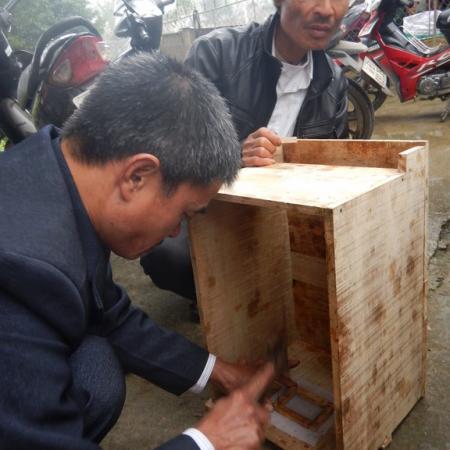
M. Nguyen Thanh Hao est venu s'installer dans la commune lorsqu'il était tout petit. Sa famille compte 5 personnes, dont un père de 95 ans, sa femme, 2 enfants scolarisés dans le secondaire et lui-même. Il possède 4 ha de forêts, dont la moitié est constituée de plantations d'acacias, 2 ha d'orangers qui apportent le revenu principal à sa famille, 0,2 ha de cultures annuelles dont la canne à sucre, le riz paddy et le maïs. Le bétail comprend 2 vaches, 1 veau, 30 poulets et 10 ruches. Il constate qu'une grande partie de la forêt naturelle pauvre est convertie en plantations à court terme, principalement d'acacia pour le bois à pâte. Les producteurs d'acacia peuvent obtenir un revenu en effectuant une rotation de 5 à 6 ans avec cette espèce à croissance rapide, ce qui ne nécessite qu'un petit investissement. Cependant, cette conversion a de nombreux effets négatifs sur les écosystèmes. La terre est exposée à la chaleur pendant les journées chaudes et à un ruissellement important pendant les pluies, de sorte que la couche supérieure du sol se dégrade après chaque rotation, ce qui aggrave les inondations. Aucune autre plante ne peut pousser sous le couvert de l'acacia en raison de sa densité. La rotation courte entraîne une diminution des ressources en eau souterraine. En conséquence, la quantité et la qualité de l'eau nécessaire aux besoins quotidiens des hommes et aux cultures dans les parties basses de la zone sont réduites. M. Hao et d'autres ménages ont dû passer de deux cultures de riz paddy par an à une culture de riz paddy et une de maïs ou de manioc en raison des pénuries d'eau. Ce problème est exacerbé par les conditions météorologiques imprévisibles. Le projet de la GIZ lui a fourni des semis de bois indigène à ajouter à ses forêts naturelles en haut, des orangers au milieu, des ananas et des arachides entre les champs d'orangers, des ruches et du compost. M. Hao et d'autres membres ont compris qu'ils devaient conserver les forêts naturelles existantes plutôt que de procéder à des coupes à blanc pour l'acacia, pour un certain nombre d'avantages, notamment les services d'approvisionnement - bois de chauffage, germes, herbe pour les animaux, eau pour les humains et les cultures ; et les services de régulation - eau souterraine, microclimat, habitat pour d'autres plantes sous la canopée. Bien qu'il doive consacrer plus de temps à ses champs d'orangers, les plantes ajoutées réduisent l'érosion, conservent l'humidité et améliorent les sols. Sa famille confirme clairement que la plantation de bois indigène n'est pas pour sa génération, mais pour l'avenir, même lointain, et qu'elle serait heureuse de protéger les écosystèmes pour ses autres cultures, pour les familles voisines et pour les écosystèmes eux-mêmes. Ils apprécient de voir des oiseaux et de belles fleurs autour d'eux et reconnaissent qu'ils font ce qu'il faut.

